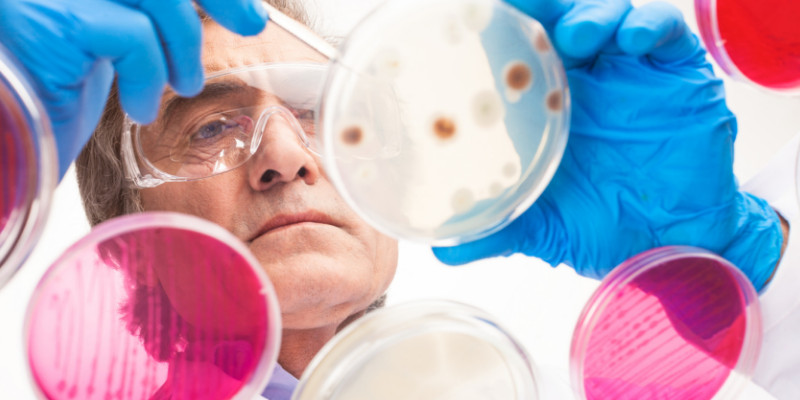The Bacteria That Causes Acne Has a New Name

You are probably used to seeing the term P. acnes in research studies and other articles that discuss acne-causing bacteria. P. acnes is short for Propionibacterium acnes, which, until recently, has been the scientific name for the specific type of bacteria that is known to cause acne. Now, you might also see this same bacteria’s new name: Cutibacterium acnes, or C. acnes for short. Take a look at why this name change came about, and why the balance of bacteria on your skin is so important for its health.
Cutibacterium acnes vs. Propionibacterium acnes
While you might still see either P. acnes or C. acnes used to describe the same acne-causing bacteria, scientists recently found that C. acnes is the more accurate name. Propionibacterium is a genus in the family Propionibacteriaceae, which includes bacteria that live in cheese, dairy products, cattle rumen, and human skin. Because of how diverse this family of bacteria is, researchers have proposed that it be broken up into three distinct genera: Acidipropionibacterium, Cutibacterium, and Pseudopropionibacterium.
Cutibacterium specifically refers to the strain of bacteria that inhabits human skin, where it is known to cause acne and inflammation if overpopulated.
How Does Bacteria Cause Acne?
Your skin is home to a diverse ecosystem of microscopic living organisms, most of which are harmless or even beneficial. However, when your skin’s microbiome becomes unbalanced and too much of a particular microorganism is able to grow, skin problems like acne and eczema can occur. C. acnes, formerly called P. acnes, is the bacteria that, if overpopulated, can settle into sebaceous glands in your skin and trigger your body’s inflammatory response system. This is what causes the red, sometimes painful pimples you get when you have an acne breakout.
Clogged pores create the perfect environment in which acne-causing bacteria can thrive. That is why people with very oily skin and people with dry, flaky skin can both get acne. Oil and flakes of dead skin cells can easily become trapped inside your pores, allowing acne-causing bacteria to flourish.
The Latest Acne Treatment Options
Since C. acnes is the root cause of acne, most acne treatments are aimed at killing the bacteria. Benzoyl peroxide, salicylic acid, silver, and sodium hypochlorite are some of the most common antibacterial ingredients used in acne treatments. Blue light therapy has also become a popular acne treatment option, but we now know that blue light may also accelerate skin aging.
Benzoyl peroxide and salicylic acid are not tolerated well by people with very dry or sensitive skin types. Instead, glycolic acid can be used to keep pores free of debris and therefore prevent acne-causing bacteria from overgrowing on the skin.
Research is underway to develop an acne vaccine, which would target a specific protein called CAMP factor 2, which is believed to trigger the inflammatory response associated with C. acnes and acne. Although this vaccine is still in testing stages and is not yet available, it could be a reality in the next 5 to 8 years.
Bottom Line
Much research is being done to better understand acne-causing bacteria and to develop novel treatment and prevention options for people with acne-prone skin. It is possible that within the new few years, we could have an effective vaccine that would prevent acne from happening in the first place.
Be on the lookout for more blogs and articles on the latest news and updates in the area of acne treatment. Follow Baumann Cosmetic on Facebook, Instagram, and YouTube to be sure you don’t miss a post!
©2018 MetaBeauty, Inc.


